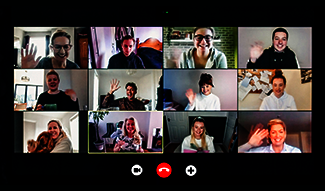
E-mail is ubiquitous in the American workplace and along with its growth comes the risk of lawsuits that can cost your company a bundle.

In most cases an employer is held responsible for information contained in corporate e-mail messages. For example, Chevron settled a case filed by four female employees for $2.2 million, after the employees charged that a threatening work environment was created when e-mails with sexually harassing material were circulated in the company's e-mail system.
Clearly, a company must take steps to ensure that e-mail communications don't pose a legal risk. To help insulate yourself, add legal disclaimers to either the beginning or end of your e-mails.
A disclaimer can help protect you in these areas:
Confidentiality. Add a disclaimer at the end of e-mail messages that the material is confidential. This helps protect you from charges that you breached confidentiality. Moreover, add a disclaimer that the e-mailed material is meant only for the person it is addressed to and that anyone else who sees it is bound to confidentiality. This helps insulate if an employee accidentally forwards a confidential document to the wrong person or if the e-mail is intercepted.
Viruses. Include a disclaimer that the e-mail could contain damaging viruses, worms and Trojan Horses and that the person receiving the message is responsible for scanning for viruses. Otherwise, your company can be held liable for damages. And be sure to install a virus checker that blocks viruses from coming into or out of your system.
Contracts.In some instances, you should state that specific individuals in the company must confirm any agreement that amounts to a contract. The reason: Several state and federal laws have made it legal to form binding legal contracts through written communications, including e-mail messages.
Advice. If you e-mail advice or other information that the recipient could rely on, include a statement that you make no claims, promises or guarantees. Your company could be liable if an employee provides professional advice in an e-mail and it goes wrong. A disclaimer lowers your risk and puts the onus on the recipient or even a third party for action taken on the advice. Include in your disclaimer that nothing in the e-mail should be used as a substitute for professional advice.
Client relationships If you provide professional or other services, include a disclaimer that any dealings through e-mail messages -- unless otherwise agreed -- don't comprise a client relationship. It's quite common for service providers to include professional opinions or even general advice in an e-mail, even when unsolicited. A number of court cases have held that this advice can actually and unwittingly create a relationship of trust.
Warning: You cannot protect yourself entirely from libelous or defamatory content.
Your company is ultimately responsible for the content of e-mail messages generated by employees, although a disclaimer can decrease the risk of liability.
At the very least, you need to be able to show that you have an e-mail policy and employees have been instructed not to send libelous, inappropriate or defamatory matter. In disclaimers, this information can be spelled out and you should include an e-mail address or phone number where violations can be reported.




